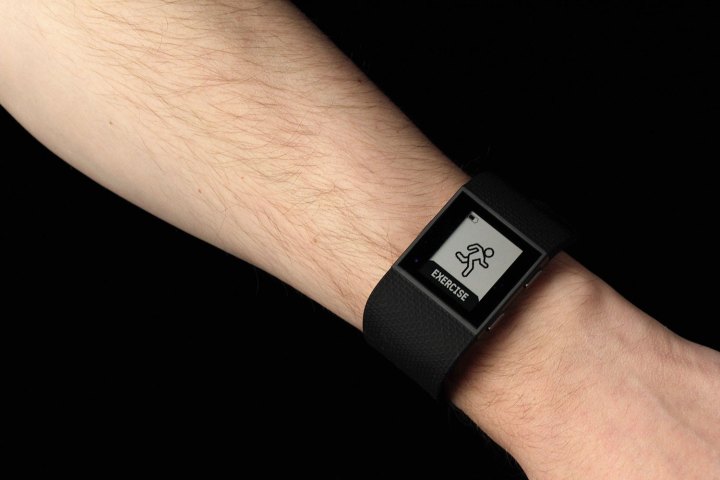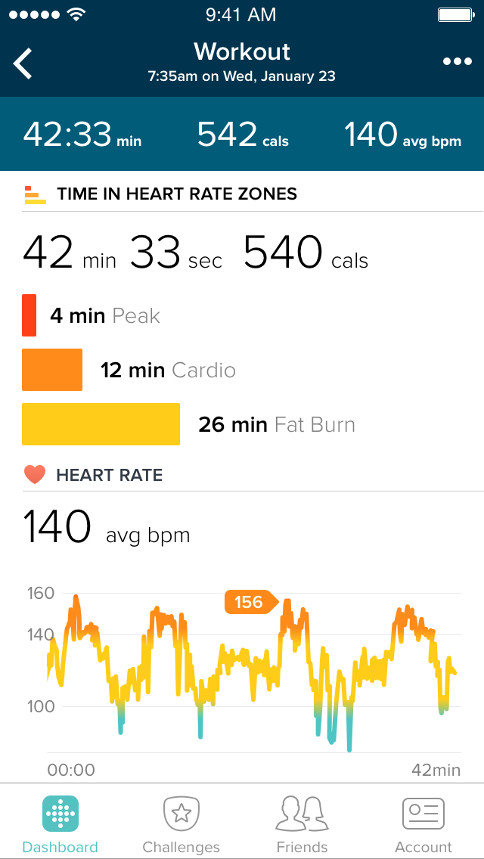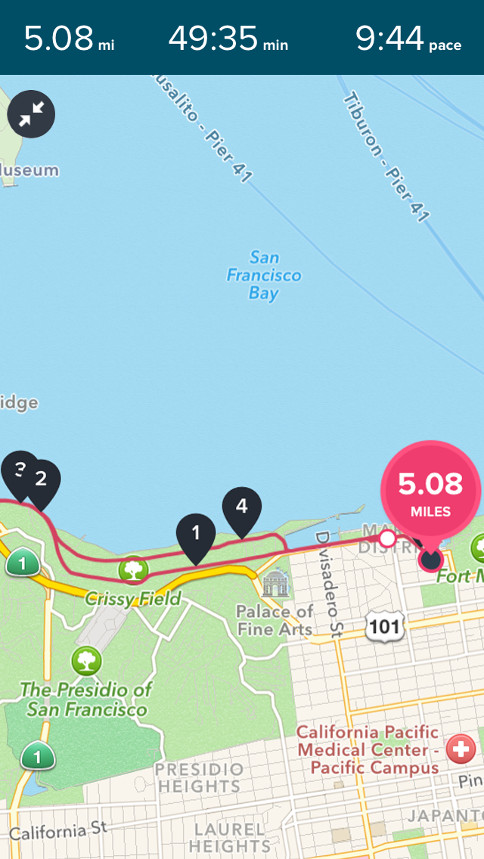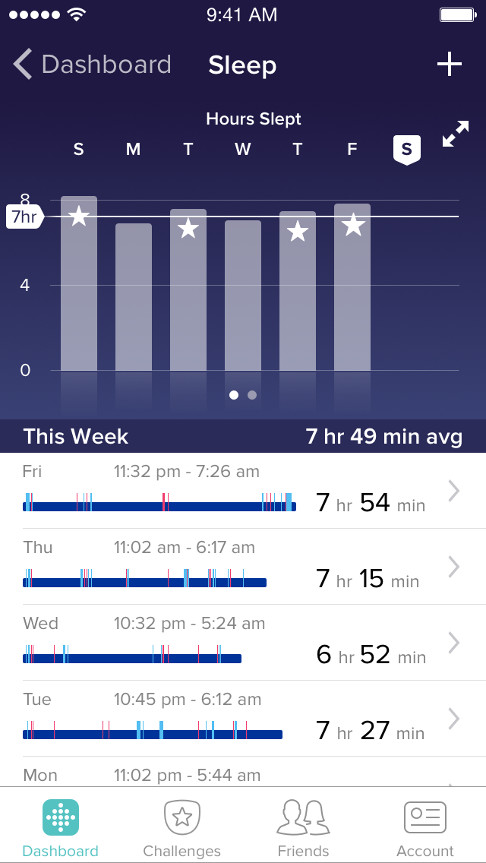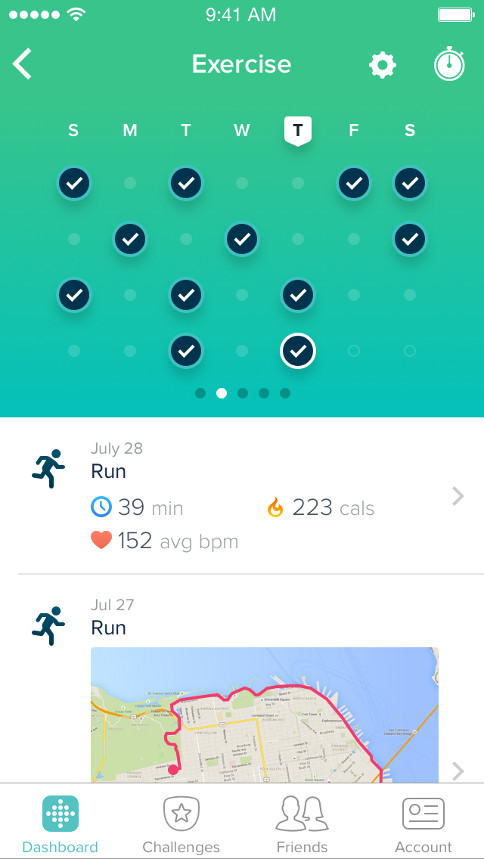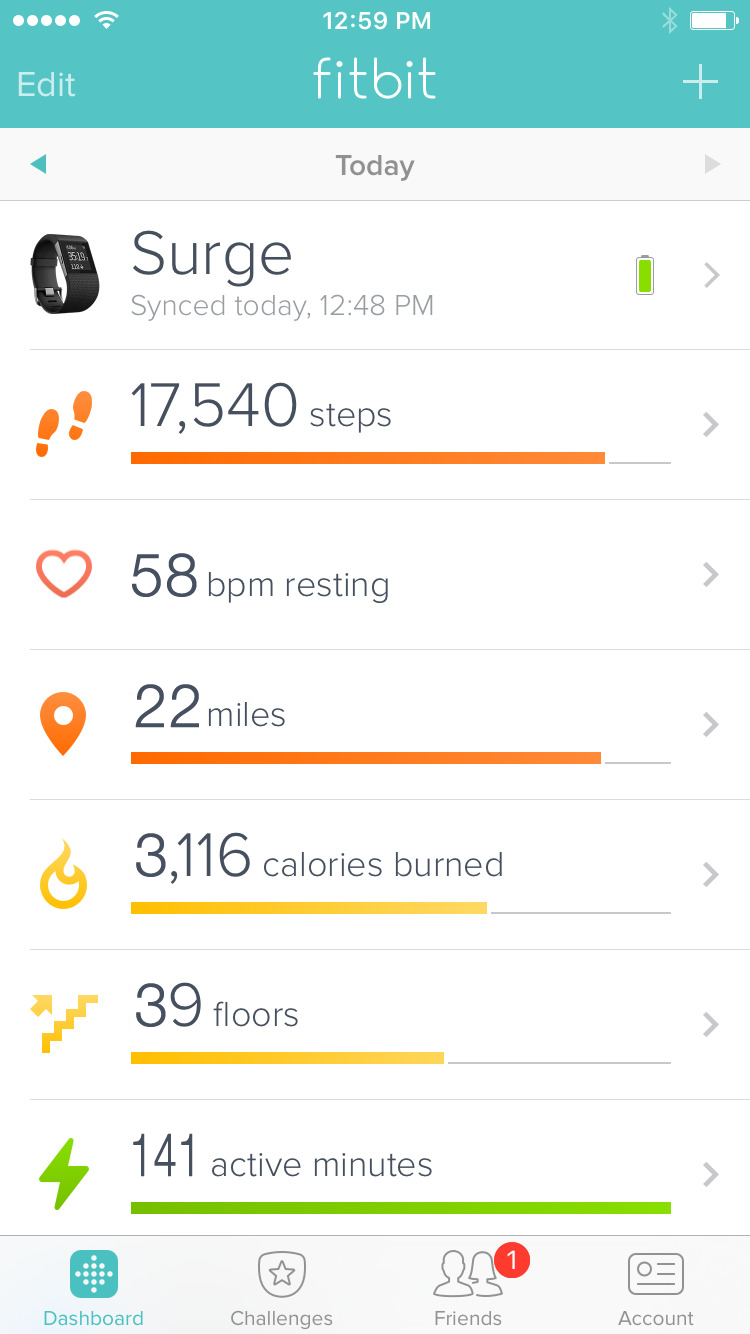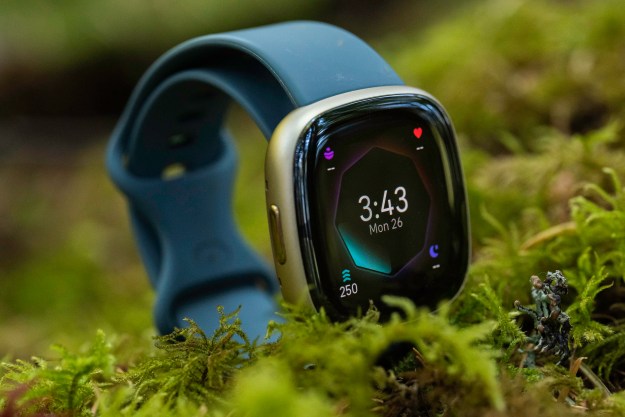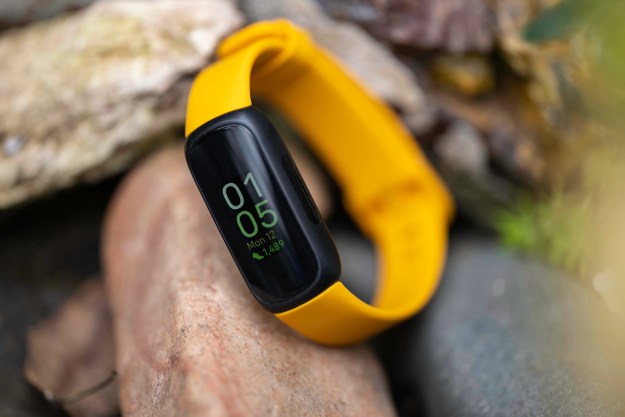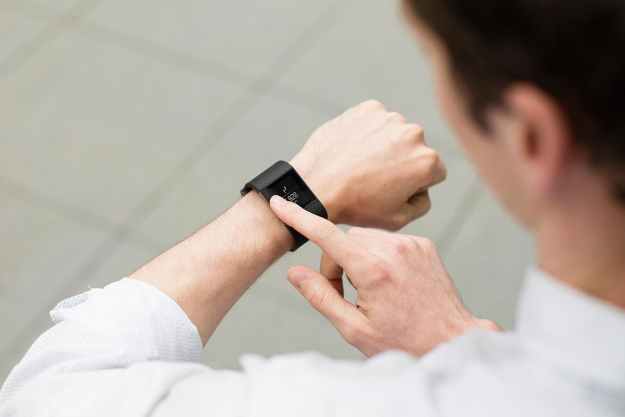
“The market may be swelling, but Fitbit's Surge still rides high.”
- Integrated GPS and continuous heart rate monitoring
- Easy to setup and use
- Automatic sleep tracking
- Excellent battery life
- Design is large, clunky, and dated
- Not really a smart watch
- Drab, monocolor display
If the Fitbit Flex was the mother of all Fitbits, the product that catapulted the company to the top of the fitness apparel market, the Surge is its superbaby.
Released almost a year ago, the Surge is Fitbit’s first fitness tracker that doubles as a watch and remains a popular model, although the newly announced, slightly cheaper Blaze will clearly be a popular alternative. The Surge was the company’s most powerful and feature-packed fitness tracker at the time, and even now, a $249 question still looms over its head: Is it worth the money?
What’s new is old and new again
Billed as a fitness “superwatch,” the Fitbit Surge tracks all of the things you’ve come to expect from Fitbit and other fitness trackers – steps, calories, sleep, and overall activity. The device improves on other Fitbit models by offering a continuous heart rate monitoring feature and built-in GPS.
It’s no smartwatch, however; that’s the domain of the new Blaze. There are no third-party apps for the Surge, and notifications are limited. It’s best to think of it as a souped-up version of its little brother, the Charge HR. It’s a Fitbit with a few more features and an always-on watch face. It’s not quite a smartwatch but is more functional than most wearables.
The Surge packs all the sensors and functions of Fitbit’s previous models into a slightly chunkier, 1.34-inch-wide body. But unlike it’s lesser priced siblings, the Surge comes packed with features for the sportsman: GPS and a heart rate monitor, which make it ideal for running, hiking, or hitting the gym, tracking specific activities such as spinning, weight lifting, cross training, yoga, and general workout sessions. This is a great feature if you’re incredibly active and workout with intense variability like I do. But outdoor enthusiasts be warned: The GPS is not as responsive or as accurate as other devices on the market – the Garmin Forerunner, for example.
Like the Charge and Charge HR, the Surge pairs with your Apple or Android smartphone to show call and text notifications directly on your wrist. You can also use the watch to control your music, provided your smartphone and Surge are paired via Bluetooth.
Let’s just say that the Fitbit Surge hasn’t won any prizes for its design.
The Surge gets a few other upgrades over its stablemates as well. The device is dramatically better at sleep tracking that other Fitbits thanks in part to a new and improved sensor that allows it to better detect when you’re sleeping and when you’re awake and active.
When you are awake, the Surge also counts steps, of course – the basis behind every Fitbit. Like its predecessors, the device does an admiral job of keeping tabs on your moves.
Unlike other Fitbits on the market – the Blaze was still unavailable at the time of this review — the Surge has continuous heart rate monitoring. No straps required, the Surge lets you maximize training, maintain workout intensity, and monitor calorie burn, keeping you in the zone during your workouts all day long. And according to my highly unscientific test of comparing its data against that of my Garmin HR, it’s incredibly accurate. Or so it seems to this reviewer, anyway: A recent, class-action lawsuit accused the company of faulty monitoring in this department.
These may seem like modest upgrades over the less capable models. Yet knowing and understanding your heart rate both during peak physical activity and at rest can be a significant barometer or your health. And because the heart rate monitor is continuous, you can check your heart rate from the bike or the desk in real time, directly from the device’s display or through the companion app.
Design and Display
Let’s just say that the Fitbit Surge hasn’t won any prizes for its design. While it’s light (2.7 oz.) and comfortable to wear, its design is just okay. The Surge has a rectangular touchscreen that is a bit clunky; it occupies a fair amount of real estate on the wrist. Unlike an Apple Watch or the Tag Heuer Connected, it’s not something that you would wear to a nice dinner or formal event. If you’re looking for something a bit more stylish, the new Blaze might be a better choice. It’s designed to look like a watch – it’s Fitbit’s first real entry in the smartwatch category, in fact – and some would call it downright handsome.
The Surge’s larger design also made it difficult to tuck into a long-sleeved shirt.
Though not fully waterproof, the device can endure a few splashes. The Surge is water-resistant up to 5 atmospheres, meaning it can be submerged in 165 feet or 50 meters of water. But because the device cannot withstand the force associated with swimming strokes, Fitbit does not recommend swimming with the tracker (sorry triathletes!).
The Surge come in three sizes (small, medium, and large) and is made from a flexible, durable material common to sport watches. It also boasts a surgical-grade stainless steel buckle. The rubber strap is available in black, blue, or tangerine and is incredibly comfortable. In fact, there were times that I forgot I was wearing it, despite the chunkiness of the device. And while the band will dirty and stain from salt and sweat, I found it fairly easy to clean with warm water and a touch of dish detergent.
Like the rest of its design, the display is rather drab. The 1.25-inch monochrome LCD touchscreen uses a number of gray and blue variants for its home screen and menus. There is a solitary button on the left side for toggling between a live view of your daily stats and the function screens, and two buttons on the right are used as selection inputs.
The combination of physical and capacitive controls works well. It’s a snap to navigate the Surge’s options and features without getting lost; the touchscreen was incredibly responsive to boot, even when wet from sweat or rain. The LCD screen is backlit for use in low light. This also adds to the device’s decent battery life. Though Fitbit claims that users can go seven days between charges, I was only able to squeeze four or five out of the battery, depending on whether or not heart rate monitoring was on. (The device charges from a proprietary USB cable, so don’t lose it!)
Turn the Surge over and you will find the heart rate monitor – a small camera flanked by two green LEDs mounted atop a small bump that lets the sensor maintain contact with your wrist. This seems to work effectively, making the tracker accurate without the sacrifice of comfort. It’s also here where you find the charging port.
Using the Device
As a fitness tracker, the Surge shines. Setup is simple – just sign into the app and pair with your smartphone via Bluetooth. The app is among the best available. It’s very simple to use, informative, and serves as activity central. The app also lets you challenge friends to activity matches and keeps track of everyone’s progress.
Unlike it’s lesser priced siblings, the Surge comes packed with features for the sportsman
You can dig into your metrics by visiting specific categories. Here, highly visual charts and graphs will show you the peaks and valleys of your heart rate, revealing how resting heart rate can change over time. The dashboard also provides a closer look at steps, workouts, and other data. Just keep in mind that unlike most fitness trackers, the Surge isn’t compatible with Apple’s Healthkit, which means that the device may not be cross-compatible with other devices or datasets that you already collect.
Activity tracking is incredibly reliable and the Surge does a great job keeping its users motivated; users can continuously see how they are performing against their fitness goals. Sleep tracking, as mentioned, is also automatically monitored through the device (versus other models which require the manual push of a sleep button) and there’s a vibrating silent alarm too.
Surge records days of detailed motion data, minute-by-minute, and keeps tabs on your daily totals for up to a month.
You control the Surge with a mix of touch-screen gestures and button commands. The Fitbit app will allow you to customize the watch face home screen. Swiping left or right allows you to preview metrics such as steps taken, heart rate, calories burned, and floors climbed.
Using the left button, you can access more options including Run and Exercise, which allows you to track your workouts. In Run mode, you can select from Free Run, Treadmill Run, or Lap Run. Each of these options has preloaded settings to help you monitor the most important data. Free Run and Lap Run also initiates the device’s GPS to track your runs.
Heart Rate Monitor
The Surge’s always-on heart rate monitoring uses Fitbit’s PurePulse technology. This proprietary new technology allows you to use the built-in optical heart rate sensor to guide you during runs and workouts while also monitoring resting heart rate daily. Over time, you can see what activities and life-events caused your heart rate to fluctuate.
Fitbit’s PurePulse uses LED lights to detect changes in blood volume as your heart beats, allowing for more accurate calorie counting. It’s not a medical grade sensor but it certainly does the trick, giving you a snapshot of your heart rate across activities with decent accuracy. Just how accurately remains a question for the courts, at this point.
After a workout, you can access the app to see the heart rate zones you hit during that workout — fat burn, cardio, and peak. You can also set a custom zone, designating upper and lower limits.
GPS
Perhaps one of the Surge’s best features is GPS. This lets you track your speed and map your runs without a phone strapped to your arm – a big leg up on devices like the Apple Watch. It also lets the device go head-to-head with the Garmin Forerunner 230 or 235, which have built-in GPS but will set you back another $50-100.
For the most part, the GPS worked great. If you live or run in the city, the Surge can take a little time to lock on to satellites. Luckily, the Surge has an option to bypass the waiting game and get on with your workout. Doing so still allows the device to track heart rate and distance but run mapping won’t become available until the GPS locks. A little vibration will let you know when it’s ready to go.
Conclusion
The DT Accessory Pack
Up your game with these accessories, hand picked by DT editors:
Fitbit Aria ($130)
Embrace the lifestyle and quantify everything: This scale knows all.
Fitbit Wireless Sync Dongle ($20)
Plugged it into a USB port and sync your tracker to your Fitbit dashboard.
The Fitbit Surge is far from perfect, but it remains one of the most complete fitness trackers on the market. It has a range of options for a range of activities while offering users continuous heart rate and GPS – features that you don’t typically see in devices at this price point. Yes the look is dated and drab, but the Surge is incredibly comfortable to wear, lightweight, durable (no scratches after 2 weeks of continuous wear), and incredibly simple to use.
So is it worth the $249? For the person who wants consistent fitness tracking, durability, and the feature of a digital watch, the Fitbit Surge gives you all three in one. And as an everyday activity tracker, it’s great. For casual runners and fitness buffs who are into heart rate training, the Surge may just be the “superwatch” you’re looking for.
Highs
- Integrated GPS and continuous heart rate monitoring
- Easy to setup and use
- Automatic sleep tracking
- Excellent battery life
Lows
- Design is large, clunky, and dated
- Not really a smart watch
- Drab, monocolor display
Editors' Recommendations
- Best Apple Watch 8 deals: Save on last year’s model
- Best Fitbit deals: Save on Inspire 2, Charge 6, and Sense 2
- Samsung’s new fitness tracker could be released any day now
- Samsung’s new Fitbit killer just leaked, and it looks impressive
- Garmin’s newest wearable is a big upgrade for your sports bra



